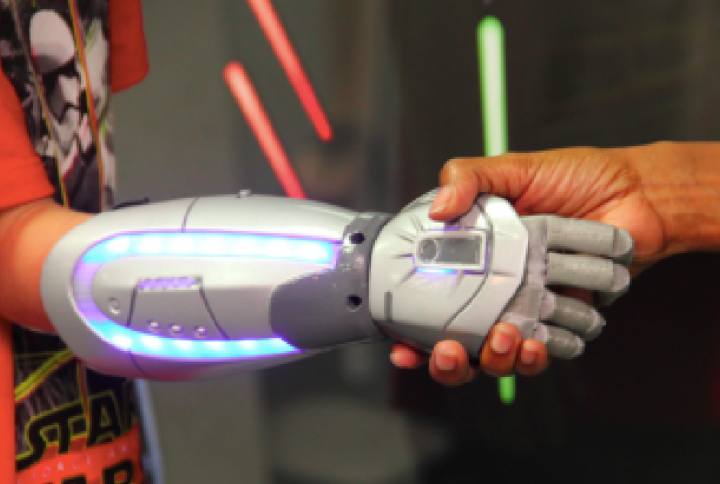
Ten years in the making, the skin is comprised of two layers of plastic — on top is a sensing mechanism that “can detect pressure over the same range as human skin,” while the bottom transports electrical signals and converts them to stimuli that actually create the feeling of touch. Between the two layers lies a series of carbon nanotubes that are capable of conducting electrical signals when pushed together. The closer they are to one another, the more current is allowed to travel, creating different pressure signals. “This is the first time a flexible, skin-like material has been able to detect pressure and also transmit a signal to a component of the nervous system,” said Zhenan Bao, the Stanford researcher who led the team of 17 on its incredible endeavor.
The truly novel aspect of Bao’s work is the skin’s capacity to transmit signals directly to the brain by way of a new methodology known as optogenetics, in which cells are manipulated to respond to light signals. It’s the same technology scientists have used previously to stimulate certain areas of mice brains to induce different wave patterns, and similarly, Bao’s team translated “electronic pressure signals from the artificial skin into light pulses, which activated the neurons, proving that the artificial skin could generate a sensory output compatible with nerve cells.”
While optogenetics is not necessarily the final mechanism that will be used in relaying signals to the brain, it serves as a convincing display of the potential of the skin and its implications for sensing touch.
While the skin is not quite ready for humans yet, Bao’s work takes science and technology one step closer to manufacturing prosthetics that are true substitutes for the real thing. And with these latest innovations, Bao feels optimistic about the future of the project. “We have a lot of work to take this from experimental to practical applications,” she said. “But after spending many years in this work, I now see a clear path where we can take our artificial skin.”


